If you’ve ever wondered whether you can turn your kitchen scraps into a continuous supply of fresh vegetables, beets are a perfect candidate. Yes, it is possible to regrow beets from kitchen scraps, and doing so is not only fun but also eco-friendly and cost-effective. With a little patience and care, you can transform leftover beet tops into thriving plants, providing fresh leaves and even new roots for months.
In this comprehensive guide, we’ll explore how to regrow beets from kitchen scraps, step-by-step instructions, tips for container gardening, and ideas for harvesting both the greens and roots. This method is perfect for beginners, urban gardeners, and anyone looking to reduce food waste.
1. What Are Beets and Why Regrow Them?

Beets, or beetroot (Beta vulgaris), are a root vegetable with round, deep red bulbs and tender leafy greens. Both the root and the leaves are edible and nutritious.
Nutritional benefits of beets include:
- Rich in vitamins A, C, and K
- High in fiber and folate
- Contains antioxidants and nitrates that support heart health
- Beet greens are packed with iron, calcium, and other essential minerals
Regrowing beets from kitchen scraps allows you to:
- Reduce food waste by using beet tops and scraps
- Have a steady supply of fresh greens
- Learn sustainable gardening techniques
- Enjoy gardening in limited space, such as kitchens, balconies, or small patios
2. What You Need to Regrow Beets from Kitchen Scraps
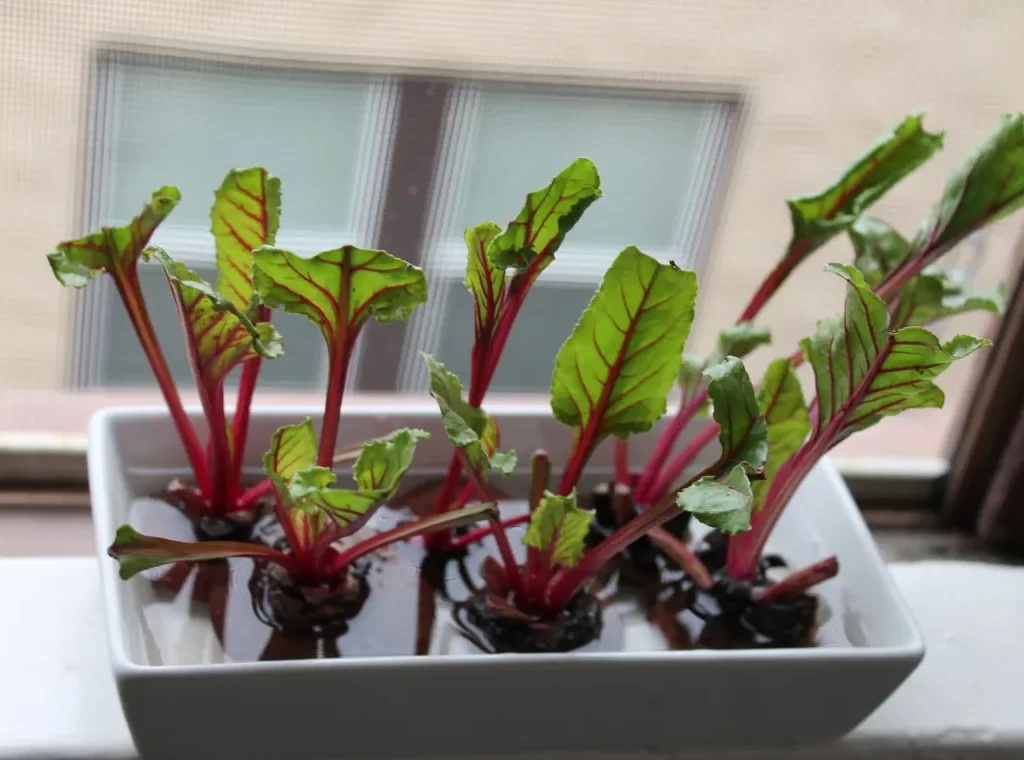
Before starting, gather the materials to ensure success:
- Beet roots or scraps with intact tops
- A shallow container or bowl for initial sprouting
- Potting soil or a container with good drainage
- A sunny windowsill or grow light (at least 4–6 hours of light daily)
- Watering can or spray bottle
Optional: fertilizer (liquid compost or organic nutrient solution) to encourage growth.
Even with minimal materials, you can begin regrowing beets right at home.
3. Selecting the Right Beet Scraps
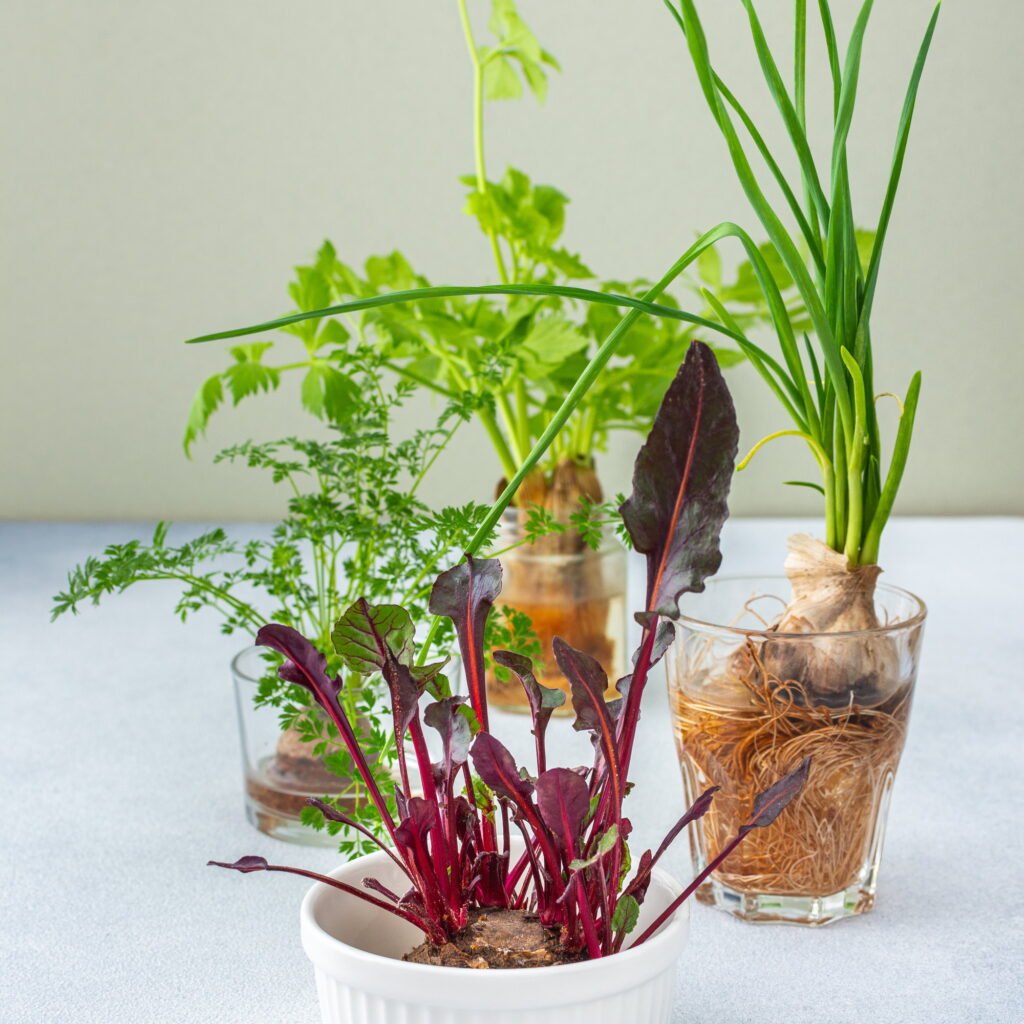
Not all kitchen scraps will successfully regrow. Choose the best ones by following these tips:
- Select fresh, firm beet roots with healthy tops.
- Use the upper 1–2 inches of the root that contain the crown or leafy portion.
- Avoid beets that are shriveled, soft, or have mold.
- Beet tops with small roots attached are ideal for regrowth.
Starting with healthy scraps increases the chance of regrowing both leafy greens and new roots.
4. Regrowing Beets in Water
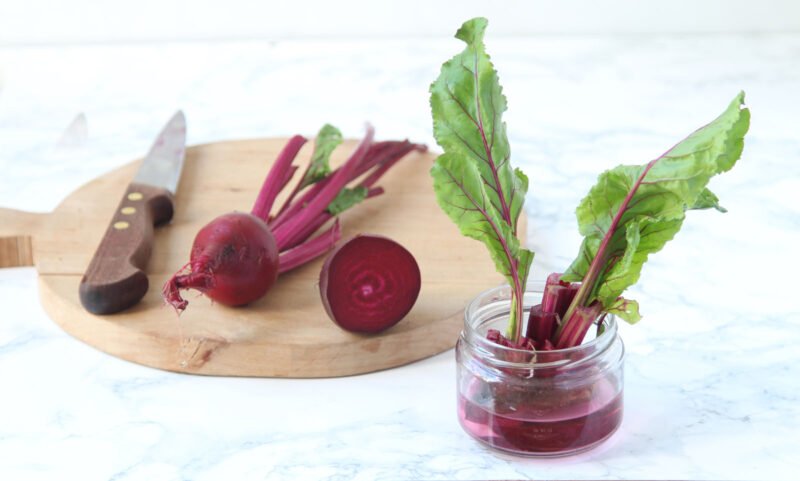
One of the simplest ways to regrow beet greens is using water. This is a great method for indoor gardening and kitchen counters.
Steps:
- Trim the Beet Top:
Cut about 1 inch above the root while keeping the crown intact. - Place in Water:
Fill a shallow bowl with water and place the beet tops cut-side down. Ensure the bottom of the beet is in contact with water. - Provide Light:
Place the bowl on a sunny windowsill or under a grow light. - Change Water Regularly:
Replace the water every 2–3 days to prevent mold and stagnation. - Watch for Growth:
Within 1–2 weeks, small green leaves will start emerging from the beet tops.
Once the greens are a few inches tall, they are ready to harvest for salads or stir-fries, or transplant into soil for fuller growth.
5. Regrowing Beets in Soil
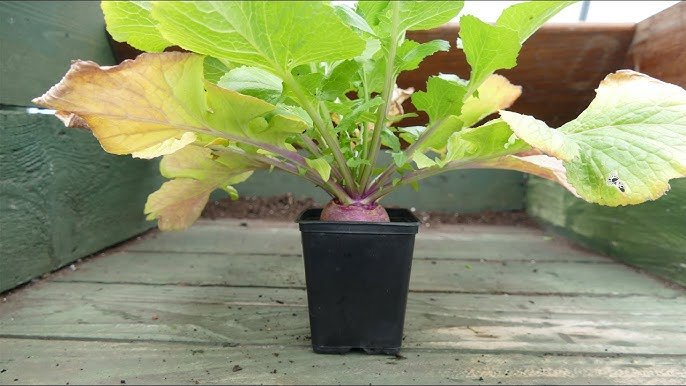
To produce both leaves and roots, planting beet scraps in soil is the most effective method.
Steps for soil regrowth:
- Prepare a Container:
Use a pot at least 6–8 inches deep with well-draining soil. - Plant the Beet Top:
Bury the bottom 1–2 inches of the beet root in soil, leaving the crown and any emerging leaves above the soil. - Water Lightly:
Keep the soil moist but not waterlogged. Overwatering can lead to rot. - Provide Adequate Light:
Place the container in a sunny area with 4–6 hours of sunlight or use a grow light. - Fertilize Occasionally:
Use organic liquid fertilizer every 2 weeks to encourage strong leaf and root growth. - Watch for New Growth:
Within a few weeks, you’ll see fresh leaves and small roots forming, ready for cut-and-come-again harvesting.
Soil-grown beets produce more substantial leaves and can eventually form a new root, allowing continuous harvest.
6. Caring for Regrown Beets
Beets are hardy, but proper care ensures a successful regrowth cycle:
- Watering: Keep the soil consistently moist but avoid soggy conditions.
- Light: 4–6 hours of sunlight or artificial light daily is essential.
- Temperature: Ideal growth temperature is 18–24°C (65–75°F).
- Pruning: Harvest outer leaves to encourage new growth and prevent overcrowding.
- Pests: Indoor regrowth is usually safe, but watch for aphids or fungus.
By following these care tips, your beet scraps can produce a continuous supply of leaves and new roots.
7. Harvesting Beet Leaves and Roots
One of the benefits of regrowing beets is that you can harvest leaves before roots develop.
Harvesting leaves:
- Use the cut-and-come-again method: snip outer leaves when 3–5 inches long.
- Leave inner leaves to continue growing.
- Harvest leaves regularly to maintain a healthy plant.
Harvesting roots:
- If growing in soil, new roots develop over 6–8 weeks.
- Gently dig around the base to check size before harvesting.
- Roots can be eaten raw, roasted, boiled, or pickled.
This approach maximizes your yield from a single kitchen scrap.
8. Advantages of Regrowing Beets from Kitchen Scraps
Regrowing beets offers several benefits beyond fresh greens:
- ✅ Reduces food waste by turning scraps into productive plants.
- ✅ Cost-effective gardening: reuse kitchen scraps instead of buying new plants.
- ✅ Indoor gardening friendly: perfect for apartments or limited outdoor space.
- ✅ Continuous harvest: multiple cuttings from the same plant over time.
- ✅ Educational: great project for kids and beginners to learn about plant growth.
Even a small windowsill garden can provide months of nutritious beet greens.
9. Common Challenges and Solutions
While regrowing beets is relatively simple, challenges can arise:
- Yellowing leaves: Caused by nutrient deficiency or lack of sunlight. Add organic fertilizer and ensure adequate light.
- Mold or rot: Overwatering or stagnant water in bowls can cause this. Change water regularly and ensure proper drainage.
- Slow growth: Provide consistent light and trim overcrowded leaves.
- Bolting: High heat may cause flowering; move plants to cooler spots.
Most problems can be avoided with proper monitoring and basic care.
10. Tips for Maximizing Yield
To get the most out of your kitchen scrap beets:
- Grow multiple beet tops in separate bottles or pots for continuous harvest.
- Use succession planting: place new scraps every 2–3 weeks.
- Combine water and soil methods: start in water to grow greens, then transfer to soil for roots.
- Provide consistent light and nutrients to encourage dense foliage and root development.
With these tips, a single beet can supply weeks of nutritious greens and even new roots.
11. Culinary Uses for Regrown Beet Leaves
Regrown beet greens are highly versatile:
- Salads: Fresh and crisp with olive oil, lemon, and nuts.
- Stir-fries: Lightly sauté with garlic and sesame oil.
- Soups and stews: Add near the end of cooking to retain nutrients.
- Smoothies: Blend with other greens for a vitamin-packed drink.
- Garnishes: Add a pop of color and nutrition to meals.
Even small harvests from kitchen scraps can enrich your daily meals.
12. Why Regrowing Beets Is Perfect for Sustainable Living
Regrowing beets from scraps aligns with sustainable and zero-waste gardening principles:
- Reduces food waste by using parts normally discarded.
- Encourages organic, pesticide-free home gardening.
- Teaches self-sufficiency and resourcefulness.
- Creates a small but continuous supply of nutritious vegetables.
This simple practice makes a significant difference in both your kitchen and your environmental footprint.
Conclusion
Yes, you can regrow beets from kitchen scraps! With minimal effort and materials, even beginners can transform leftover beet tops into thriving plants. Using water or soil methods, you can enjoy a continuous supply of fresh leaves, and eventually, new beet roots.
This approach not only reduces food waste and saves money but also provides an engaging, sustainable gardening experience. Whether you have a small apartment, a kitchen counter, or a balcony, regrowing beets is a fun, eco-friendly way to enjoy fresh, nutrient-packed greens all year round.
Start regrowing your beet scraps today and experience the satisfaction of sustainable, productive gardening right from your home!
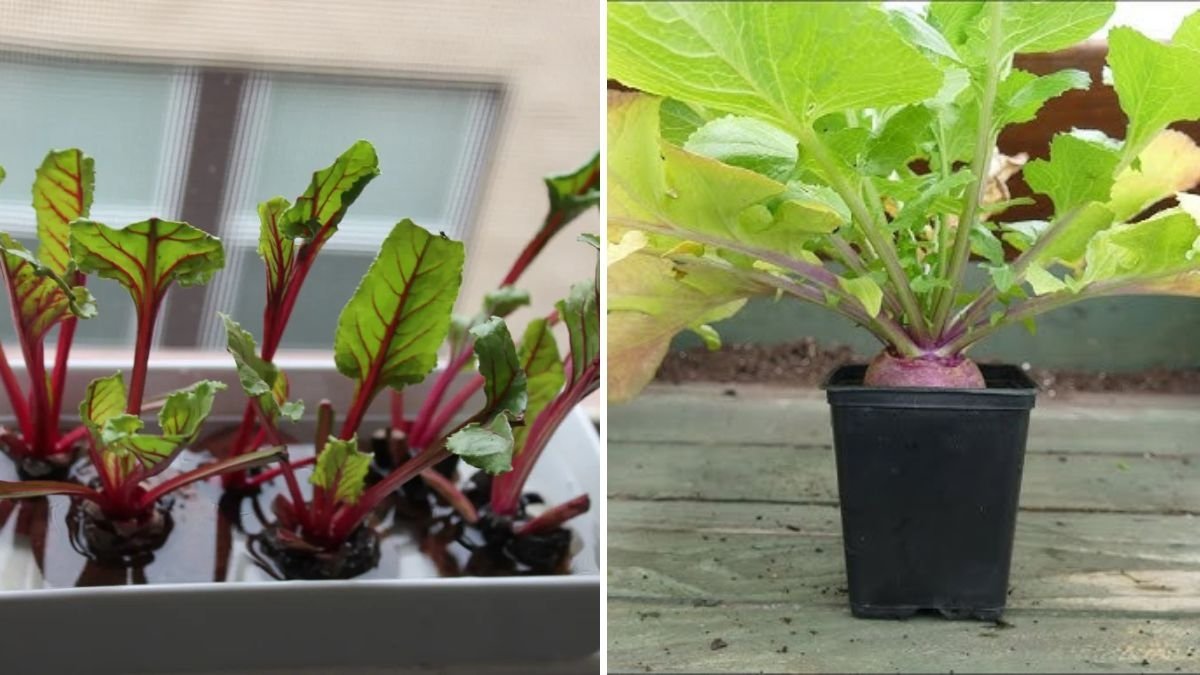





Leave A Comment